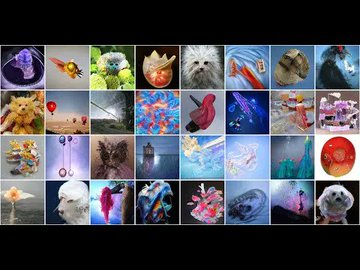
Whether you’re on the ‘AI art is art’ camp or the other, this is a tool that will forever change the creative industry for better or worse, and it has arrived. If you’re fortunate enough to not know anything about this technology, a number of machine learning / AI research labs have created AI systems that allow computers to generate images. These tools are mostly experimental and nothing close to being able to create what humans can create — until now. It’s something that the digital art field has paid close attention to and is going to change art in ways we could never expect.
From abstract art, digital painting, complex sculpture, architectural visualisation or 5 years old hand drawing, whatever you ask for, the AI makes it, or at least tries its best to. This might be less scary to any artists that might be reading this when you consider machine learning has been deployed to help creatives in their work process. Adobe has rolled out some simpler AI tools such as object selection tool and image upscaling a few years ago; On the other side of the world, the mega corporate Taobao, China’s equivalent of Amazon, has a graphic design tool that existed for a while to generate product images and advertisements of different sizes and for the sellers products.
But nothing came quite close to what Open AI’s DALL-E 2 and Midjourney has been able to achieve. Generative art will change how we approach art creation. It’ll change the kind of skill sets that’s needed for a creative job — it’s going to be less about your skill to think about composition, colour theory, tools use, it’s more about your ability to associate ideas, ability to describe visual ideas into words, and input it into the computer in the right way to generate the image you want. Does that cheapen the value of someone who puts their hands in researching, planning, sketching, developing their artworks; versus an AI just learning that from having studied millions of existing images and figuring out what we humans like to look at, and replicating that in mere minutes? Did the invention of Photoshop make oil painting obsolete?
I think the answer to that is Yes and No — maybe less people paint, but was that really so bad? When I was in design school in 2015, a lot of people don’t draw, something that would be unthinkable in a design degree in 1995; but there we were, clicking our degree to completion. It’s not taking any physical painting away, but more people are allowed a chance to be creative, and even excel when they do it right, and people that love painting by hand can still do it. Perhaps these AI generative tools* are the same way, simply allowing more people to express themselves in more interesting ways, which will in turn change the creative landscape. * (they don’t really have an official name and I’m hesitant to call them ‘AI art generators’.)
